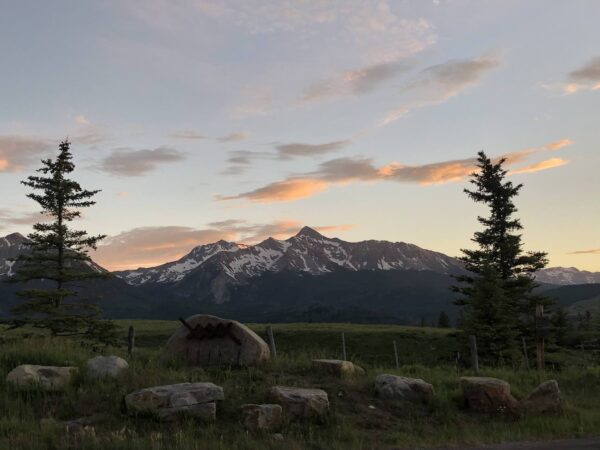
01 Sep EcoAction Partners: Resilience & Sustainability, Telluride & Beyond!
For an overview of EcoAction Partners (EAP) and to meet the team, go here.
The third column of the monthly series, “EcoAction in Action,” was written by Chris Medary, Climate Action Fellow, with a focus on renewal energy research.

Chris Medary
It’s no secret: the coming years will bring challenges due to changes in our global and local climate. To maintain the quality of the wilderness and recreation areas we all love as well as the comfort we enjoy at home, we must adapt to the impending changes as they come.
And they are coming fast.
While reading research and news articles about climate crises may feel scary, the situation in the Telluride region holds great promise and opportunity for us to become a resilient and sustainable community, while also addressing the wealth and opportunity disparities that have grown over the past few decades.
What do the words “resilient” and “sustainable” mean?
“Resilience” and “Sustainability” show up throughout our daily lives and appeal to our conscience aspirations. However, left undefined and un-contextualized, those terms become a tool for greenwashing and can lead to misinformation or confusion.
Stated plainly, sustainability refers to the ability of our current generation to meet our own needs, without compromising future generation’s ability to meet their needs. However, the concept benefits from a beefier explanation.
Sustainability came from the economic sector originally and initially assumed different forms of capital (natural, produced, social, financial, etc.) are perfectly substitutable for each other. Though as time went on, we learned different forms of capital ARE NOT substitutable for each other – the value of a healthy forest or wetland can’t be substituted for a productive mine. We can and should think of the definitions as subsets, weak vs strong sustainability. For this article – and the EcoAction series – we mean “strong sustainability” when we use the term.
Resilience refers to a system’s ability to absorb shock and maintain its identity (previous function and structure). We can apply the concept to any sector or scale of a system from our bodies, a home heating system to waste management processes, energy grids, ecosystem services, global trade networks, etc.
When it comes to energy, our production and distribution systems need to be resilient to keep us safe. Texas’s electricity outage last February, is an example of what can happen when a system is unable to absorb a shock – a winter storm in this case. Though many blamed newly installed wind and solar plants for the long-term electricity outage, the real driver of the outage and lack of grid resilience, was the state’s failure to improve and update its power plants and grid infrastructure as recommended by Federal regulators a decade earlier.
For our energy systems to be resilient, they need to be sustainable. Because our conventional energy sources based in extraction contribute to environmental degradation and are no longer economically viable, we must transition to renewable sources. Moreover, as a major source of global emissions, the energy sector holds the key to responding to the world’s climate crises.
What does this mean for us here in Telluride?

Telluride and more generally, Southwest Colorado, buys energy from Tri-State through a regional power supplier: San Miguel Power Association. Unfortunately, Tri-State’s energy supply mix is primarily coal, though they have promised to increase renewable production in the coming decade. What this means for major energy consumers is that they may be penalized for using energy, without having agency to change. However, because of our region’s unique resources we may be able to meet our own needs.
Over the coming year, I, Chris Medary – a Master of Environmental Management student from Western Colorado University – will conduct a feasibility assessment of meeting our region’s energy needs with 100% local renewable production.
I plan to use NREL’s SLOPE and EngageTM tools iteratively to assess what combinations of resources – solar, wind, hydro, and geothermal – our region could use to meet its own needs.
If you see me around town, in the office, or on the trail, don’t hesitate to say “hi.”
Relevant links:
https://www.annualreviews.org/doi/10.1146/annurev.es.04.110173.000245
https://en.wikipedia.org/wiki/2021_Texas_power_crisis
https://www.ferc.gov/sites/default/files/2020-04/08-16-11-report.pdf
https://www.iea.org/reports/global-energy-review-2021
https://tristate.coop/increasing-clean-energy
https://ourworldindata.org/income-inequality
https://www.e-elgar.com/shop/usd/weak-versus-strong-sustainability-9781781007075.html


Sorry, the comment form is closed at this time.